Actual algae, or a case of mistaken identity?
Swimming Pool Black Algae Myths BUSTED! If we are of the belief that black algae are actually an alga as the name suggests, then the answer is that we do not know this microscopic pain in the ass very well at all. It Doesn’t have roots and it does not embed in the plaster. Heck, it isn’t even Black. This is a huge contributing factor in the depth of the struggle pool operators face in remedying this scourge once established. Repeatedly treating something that is not algae as if it were algae will continuously yield poor results. The truth of the matter, as we will explain below, is that the name “Black Algae” is merely a misnomer.
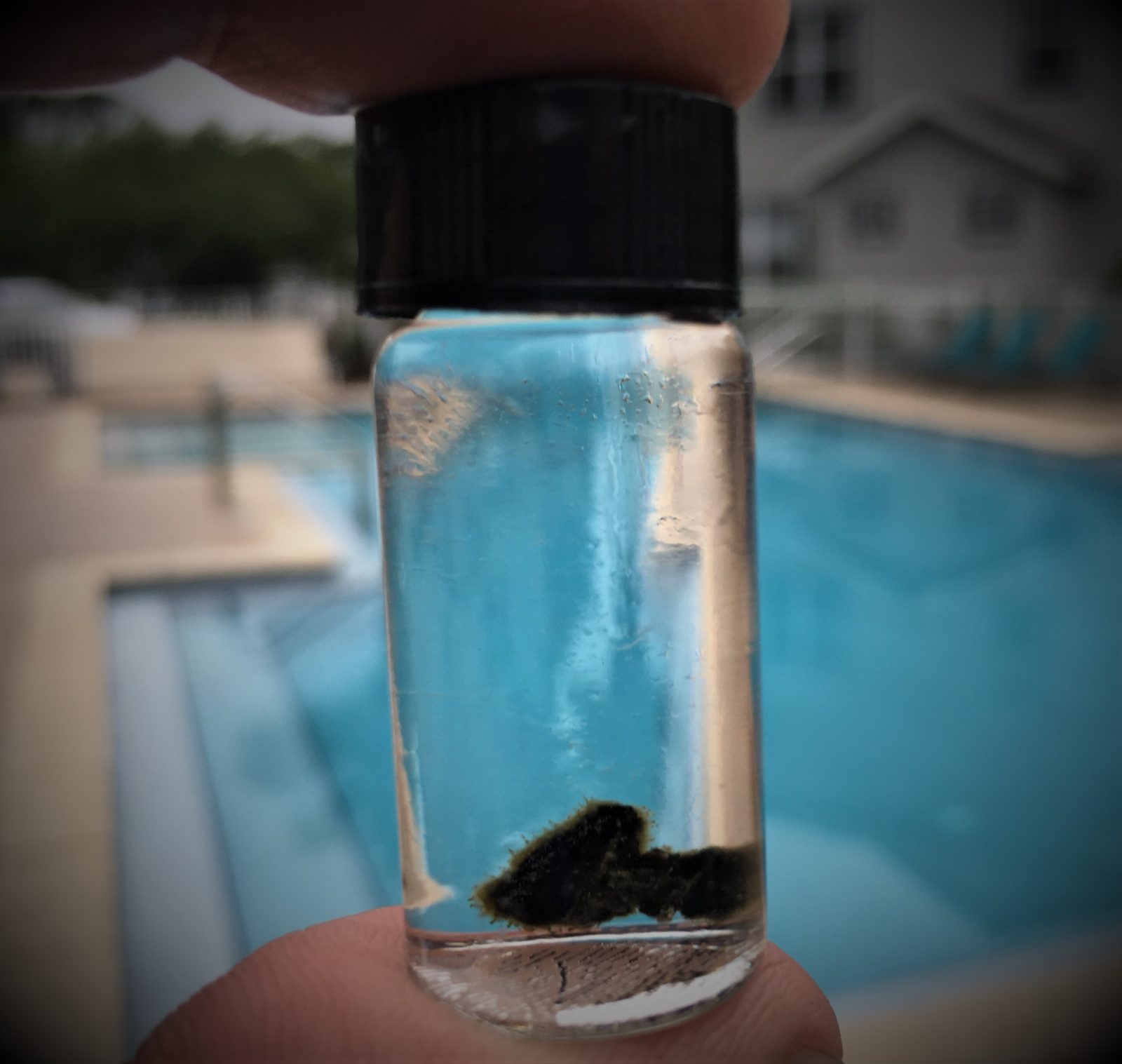
Swimming Pool Black Algae
Black Algae Myth BUSTED! The cells in black algae do not contain a formed nucleus, because of this, they can not be in the Protista (algae) kingdom. So, if black algae are not algae, what are they? Black algae, often-dubbed blue-green algae (to confuse matters further) actually belong to the classification prokaryote. Prokaryotic cells are simple and do not contain organelles found in eukaryotic cells. Bacteria, however, are prokaryotic cells. That’s right, those slimy little plaster pimples are actually a type of bacteria. The scientific name for black algae is cyanobacteria or Cyanophyte.
No Existing Research on Black Algae
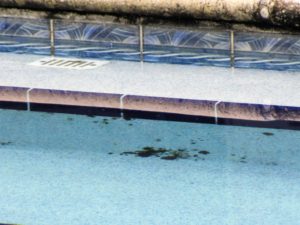
With over 150 genera of cyanobacteria and scarcity in scientific studies available, I would need to conduct my own research. Besides, if I wanted to put this piece together I need to determine exactly what and which type of whatever it is we are finding established in swimming pools. The analysis would also serve to support my statement above identifying “black algae” as Cyanophyta.
To locate samples, I reached out to my CPO Certification Class Alumni to see if any had taken on a new pool that possibly had colonization. Success! On March 30 of 2018, I gathered several 1/6 ounce screw-cap vials and a 30 ml ampule of Lugol’s Solution. Yes, I just happen to have these things. I carefully removed samples of the photosynthetic prokaryotes by gently scraping for placement into the vials. I then added the Lugol’s solution for preservation.
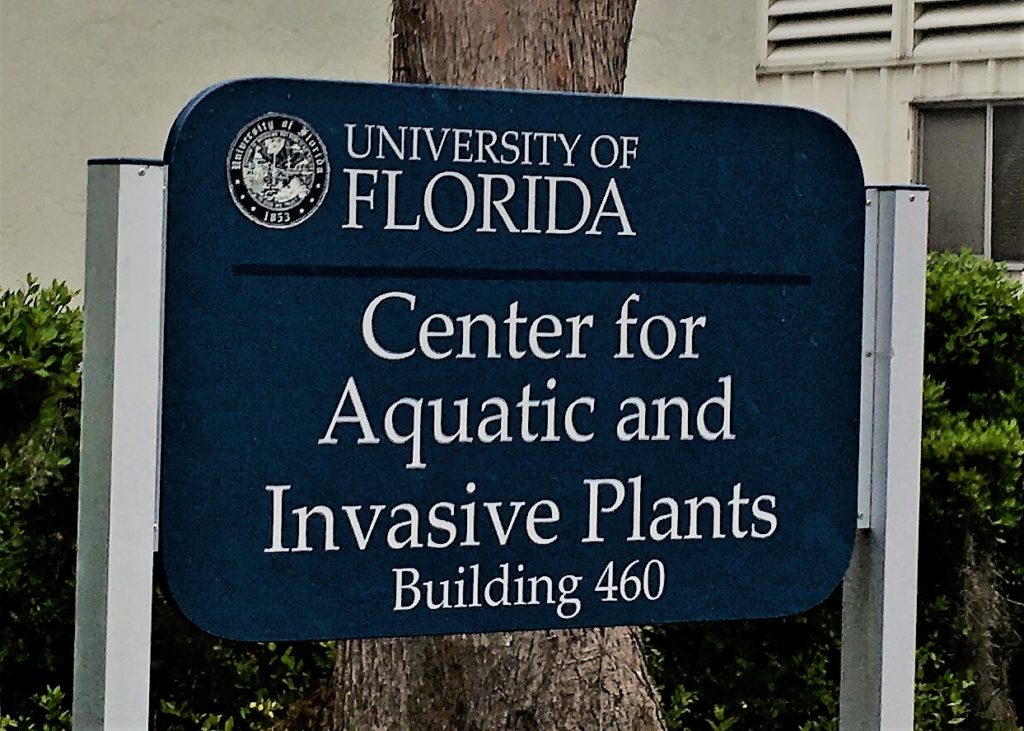
Off to the Lab!
Black Algae Myth BUSTED! With specimens in hand, I stopped in to see my friend Professor Edward Phlips Ph. D. I Found him in his Phycology Research Lab at the University of Florida’s Center for Aquatic and Invasive Plants. Dr. Phlips (BA in Biology, University of California; MS, Biological Oceanography, University of Miami; PhD, Marine Biology, University of Miami) serves as professor of algal physiology and ecology at the university. Doctor Phlips is one of the Country’s foremost experts on algae. Unfortunately, due to a planktonic bloom in the Indian River Lagoon, I would not have priority status at the microscope.
Just As I Had Suspected
Dr. Phlips was able to confirm my suppositions. The dime-sized samples of black algae I had collected were identified as thick matted layers comprised of not one, but several genera of cyanobacteria (blue/green algae) in an intertwined colony. Oscillatoria, Microcoleous, and Nostoc were the most prevalent. Here we have classified only genus, each of which has several hundred species. Of the three genera mentioned, Dr. Phlips found the discovery of Nostoc within the thimble-sized clusters to be the most interesting. He mentioned that “Nostoc is a nitrogen-fixing cyanobacterium “.
Protozoa hiding in the Biofilm?
Though we did not test specifically for other harmful pathogens among the cyanobacterium, the UF Phycologist agreed that it was possible other bacteria and/or protozoa may take harbor within the mass. We did not Test for the presence of cyanotoxins, however, certain species of Oscillatoria sp. and Nostoc sp. are known to be toxigenic and release toxins. Others have been known only to release cyanotoxins upon rupture (lysis) of the cell membrane itself.
The Original Source of O2
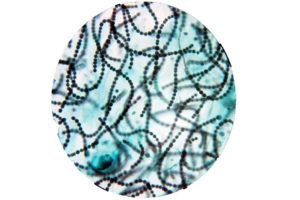
According to The University of California, Berkeley, cyanobacteria have the distinction of being the oldest known fossils at more than 3.5 billion years old. Besides being a living fossil, an added defense the bacteria possess is that they have an accessory cell wall of polymers. These secretions create a protective outer membrane. This outer layer allows them a greater level of resistance against chemicals we would typically use as algaecides and disinfectants. Colonization only adds additional layers of protection to the bacteria’s level of resistance to chlorine.
Nostoc sp., Microcoleus, and Oscillatoria. Oh my!
Regarding the analysis of the samples we collected:The sample of “black algae” was examined using light microscopy (by Susan Badylak, Senior Biological Scientist). The sample consisted of a tightly bound mat of filamentous algae embedded in mucilage. The mat was teased apart for more detailed examination of species composition. The dominant species in the mat were filamentous cyanobacteria, also known as blue-green algae. Two genera were observed, the nitrogen-fixing form Nostoc sp. and non-nitrogen fixing forms Microcoleus (as well as Oscillatoria mentioned earlier).
Nitrogen fixation is a process that allows certain groups of cyanobacteria to thrive in environments where the availability of nitrogen, an essential growth nutrient, is limited. Both genera are known to contain species that form dense mats. Some species of Nostoc are known to produce toxins, but the potential for toxin production by the species in the sample would require more specific and detailed analysis of additional samples…” – Edward J. Phlips, Professor, Fisheries, and Aquatic Sciences Program. SFRC, University of Florida
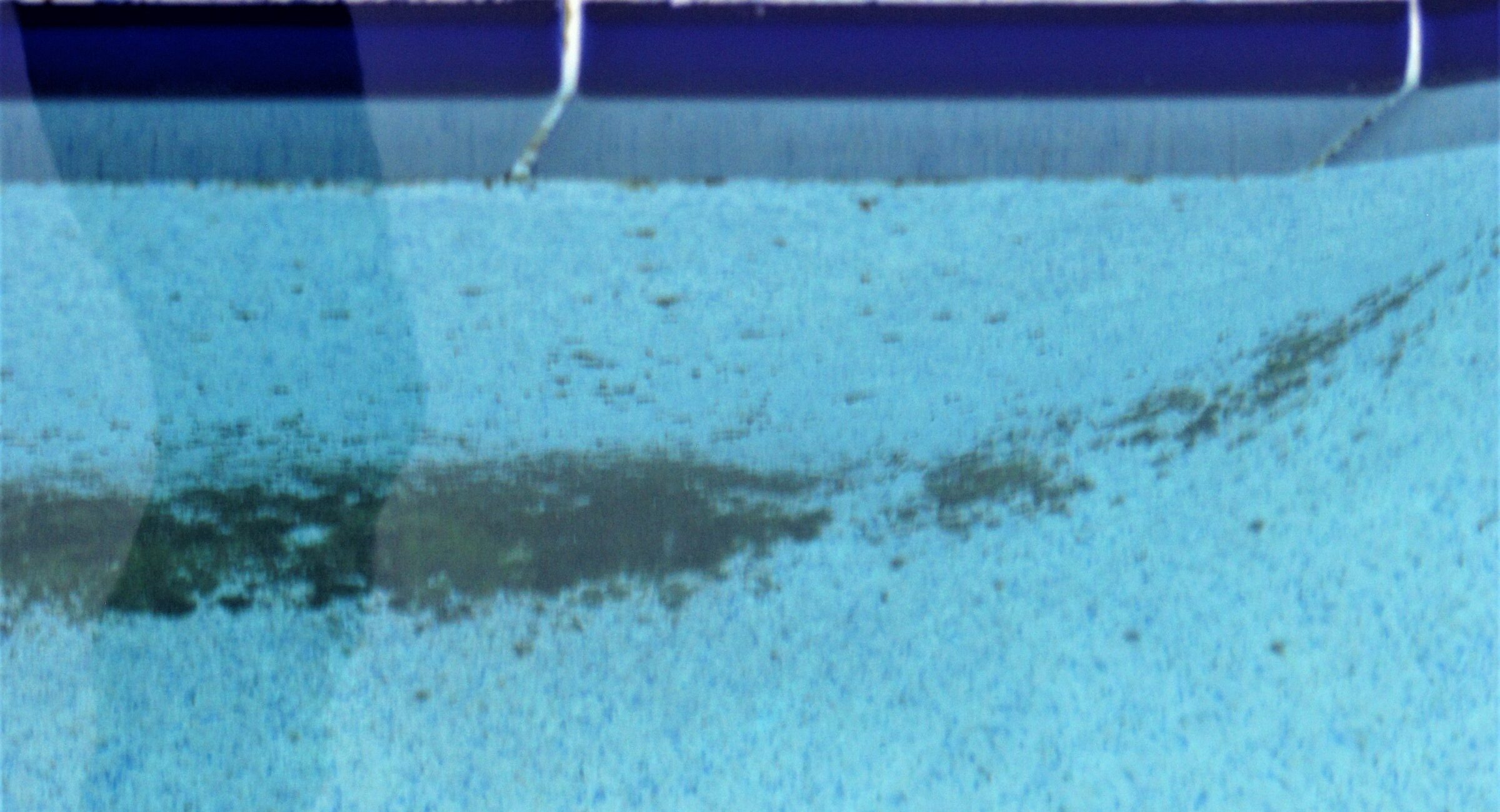
Why we get Black Algae when we are doing everything right
This discovery of Nostoc sp. is an important discovery for the pool industry because this helps to explain the challenges in inactivating this tenaciousness trespasser. We chlorinate to destroy organic contaminants, oxidize ammonia and nitrogen compounds, and to sanitize and disinfect. Nitrogen is an important component to the growth of all living things. It is absolutely essential in the ability to perform photosynthesis. The genus we have discovered (Nostoc sp.) simply produces its own food when none is available. This explains why phosphate removers and reduction of nitrates do not work well for “Black Algae” treatment. This gives this Cyanophyta the ability to thrive in a properly maintained swimming pool and aggravate the pool operator on a heightened level.
Photosynthetic
One of the unique characteristics of cyanobacteria that set it apart from other bacteria is the fact that it has some plant-like/protist-like characteristics. Specifically, cyanobacteria contain chloroplasts and perform photosynthesis, just as plants/protists do. This means that these microbes utilize sunshine, water and C02 (carbon dioxide) to produce both carbohydrates and oxygen. – Scientific American credits cyanobacteria as “The Origin of Oxygen in Earth’s Atmosphere”. This use of chlorophyll may serve as the prokaryote’s Achilles’ heel for us as pool professionals.
Bang Your Head!
This is where we recognize the benefits of heavy metal. No, James Hetfield of Metallica is not going to treat “Black Algae” problems as they arise. This is about the other type of heavy metals, specifically copper and silver. Quaternary algaecides (quaternary ammonium compounds) are truly weapons of algae destruction and have reported a smidgeon of success in treating cyanobacteria. Withal, the doses necessary for toxicity were well in excess of the recommended application rates. However, the recommended dose can prevent the microorganisms from becoming established and, if added with colonization present, can stifle the growth. This is discussed in Dr. Phlip’s 1992 research doc (Phlips, Edward & Hansen, Phyllis & Velardi, Tom): Effect of the herbicide diquat on the growth of micro-algae and cyanobacteria. Bulletin of environmental contamination and toxicology. 49. 750-6. 10.1007/BF00200790.
Chalking
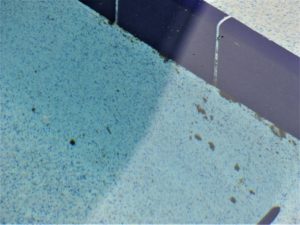
Others have reported success by sprinkling calcium hypochlorite or granular trichlor directly over the colonies (plaster pools only), or simply by rubbing a trichlor tablet upon it (plaster pools only). There are actually even “Trichlor Tablet Holders” available that enable the pool operator to attach a 3″ tablet to a telepole specifically for this purpose. These methods will achieve the desired results as long as the cyanobacteria have taken residence only upon the pool floor, or if established in only a few tiny clusters communities. Still, this chalking and/or sprinkling method will only treat what one can see. This does not treat the pool as a whole. Remember, both algae and bacteria are microscopic and you do not actually see them until there are thousands upon thousands in a colony. Swimming Pool Black Algae Myths BUSTED!
Use of Copper in Chloroplasts
Copper is essential to photosynthetic organisms. However, in large amounts, it can prove fatal to the bacteria. Copper is necessary to perform photosynthesis. Howbeit, in excess the metal will actually inhibit the process. Without the ability to synthesize food from CO2 (carbon dioxide) and energy from the sun, the bacteria, like any photosynthetic organism, will not survive. Copper will also cause lysis to occur (rupturing of the cell membrane). Therefore, the impact of a copper algaecide in the treatment of cyanobacteria is two-fold, damaging the bacteria from both inside and out.
The oligodynamic effect also comes into play.
This refers to the biocidal effect of metals. Certain heavy metals kill bacteria and viruses upon contact. Copper has a slightly higher kill rate than silver. Silver ions are believed to alter proteins within bacteria which results in complete inactivation. In systems that utilize both copper and silver, it is the belief that the copper penetrates the cell wall (lysis) providing the silver with an entry point expediting the annihilation of the nefarious nostoc with a one-two punch. What exactly happens within a cell in the presence of heavy metals (The oligodynamic effect) is still theorized. Thoughts ranging from DNA, RNA, enzyme and cellular protein destruction; to hydroxyl radical formation. All of which are beyond the scope of this discussion. Swimming Pool Black Algae Myth BUSTED!
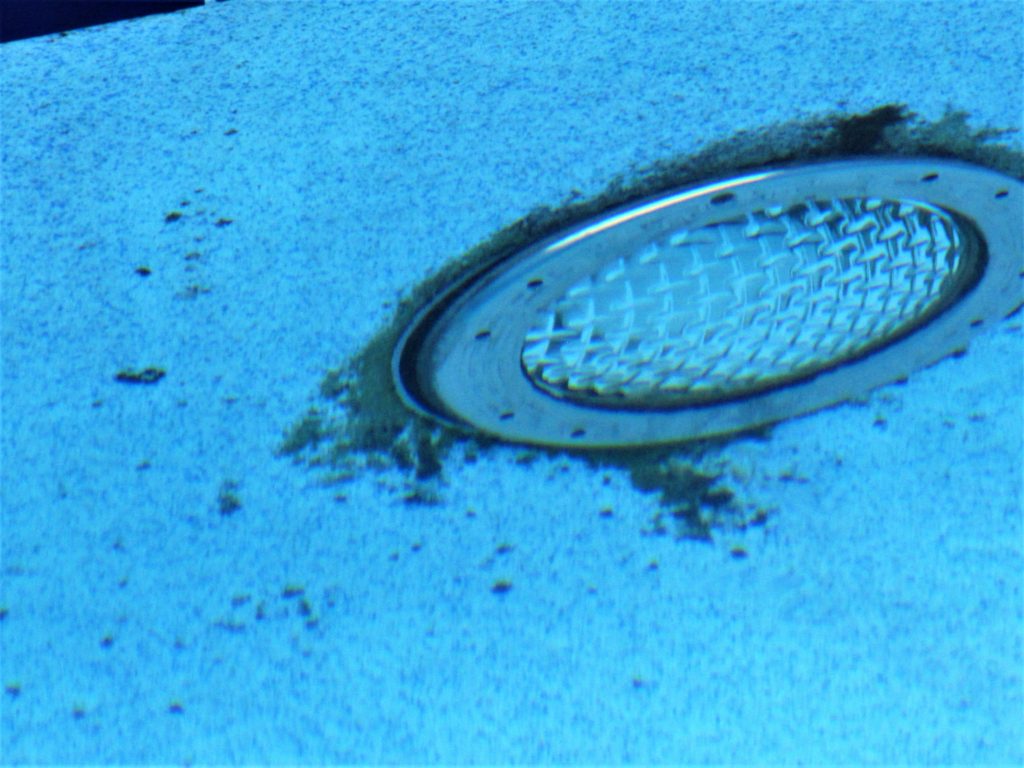
Success in Water Treatment
Ozone, permanganate, chlorine, chlorine dioxide, and UV have also proven successful in the treatment of cyanobacteria in various concentrations. Both Ozone and UV are more effective when used in conjunction with Hydrogen Peroxide, though Hydrogen Peroxide alone is ineffective. Success with these methods is achieved in tests that involve single cells vs. colonized cyanobacteria. All of the methods above are dependent upon pH, temperature, and contact time. Black Algae Myths BUSTED!
“Rudy, Your field samples are very interesting – and rare. There is almost nothing published on the varieties of algae in pools… If you focus on black “algae” you will be the first person in nearly 40 years to document it. That would be really, really cool.” – Dr. Roy D. Vore, Ph.D., Microbial physiologist, Technology Manager, BioLab inc.
“Fascinating!!!” – Dr. Tom Lachocki. Ph.D, Chief Executive Officer, National Swimming Pool Foundation
? To see our results, showing that the constituents of black “algae” vary by geographic location: Click Here
A shout out to my references:
http://www.ucmp.berkeley.edu/bacteria/cyanointro.html
https://www.ncbi.nlm.nih.gov/pmc/articles/PMC94402/
http://www.academicjournals.org/article/article1380626432_Varkey.pdf
https://www.epa.gov/nutrient-policy-data/cyanobacteriacyanotoxins
http://www.academicjournals.org/article/article1380626432_Varkey.pdf
https://www.epa.gov/sites/production/files/2017-06/documents/microcystins-report-2015.pdf
https://www.greenwaybiotech.com/blogs/news/whats-the-function-of-nitrogen-n-in-plants
Special Thanks to my G-ville peeps:
Professor Ed Phlips, Ph.D, UF Phycology Dept
Susan Badylak, Senior Biological Scientist, Department of Fisheries and Aquatic Sciences, University of Florida
Kristin Wilson, Scientist – for keeping my technobabble user-friendly
Click the Logo for a CPO® Certification Class near you:

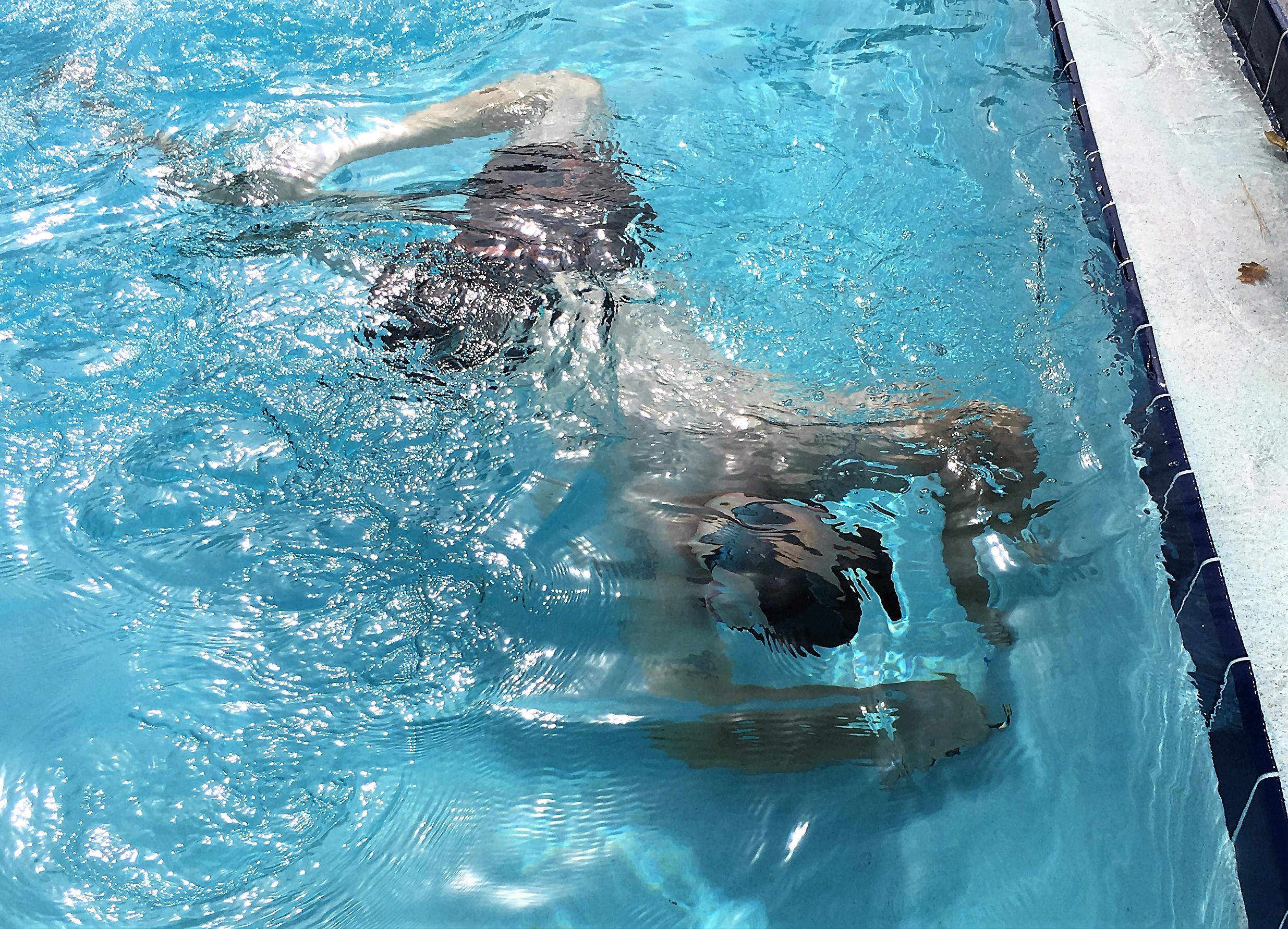

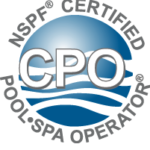
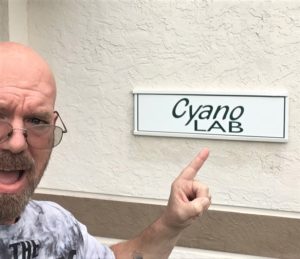

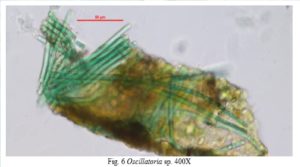

Thank u for addressing this Black Algae problem, it attacks without alot of worning to pools. I have tried everyhing, i scrub and brush for no gain o this algae, im frustraed also. Is there anything we can use when kts all over the pool..im thi ki g about draini g pool down a power washing, it seems it starts more in pools that have had alot of wear, to marcite,and homeowners who never care for the debris around their pool. Thanks i think more conversation or a chemical would be great for this problem.
Ncpool Care
Thank you Ncpool Care for reading! Aside from those chemicals addressed in the article pertaining to treatment, there are not a lot of other things out there. “Black Algae” (cyanobacteria) is and will most likely continue to be a tough one. It does tend to hit those “english muffin” surfaces. Hopefully, there will be something new in the not to distant future to help us quickly remedy this barbarous blemish when it occurs!
great read …. thanks!
– Ben , American Pool
add me
Done! Thank you Ben for reading!
Great read, Rudy- thannks. May I post this on my NAC face book page (giving credit where credit is due, of course!)?? Rob Freligh, NAC, Inc.
Absolutely Rob! Feel free to share as you see fit.
Thank you for reading it!!!
Good Scoop ! Thank you.
you are welcome. Thank you for reading!
Rudy,
Thanks for the information and the copious research and time you’ve invested. Please add me?
Donald Nolette All Seasons Pools
Thank you Donald!
Thanks for finally delving deeper on a less understood plight of every CPO ! Great read and awesome research , give credit where it’s due!
Thank you Tony and thank you for reading!
Nice job putting this together! I enjoyed the read.
Thank you John!
Most informative article I could find anywhere. Worth reading the whole thing.
Thank you Mark! Like Dr. Vore said above, suprisingly not much research on swimming pool algae (especially Black Algae) exists. I think that obtaining positive ID the genera (not 1, but 3) in the field samples as we have done will be a major step forward in treatment and prevention. Thank you again for reading!
Superb article can I use to update our members in UK at Swimming Teachers Association please?
Robbie Phillips Trustee
Thank you Robbie and thank you for reading! Yes. Absolutely feel free to share!
Simply excellent informational. I have used this information to clarify the age old question of the pool industry “what is that black stuff”. If only I could be the one to create the magic potion to rid the pool world of this incredibly stubborn specimen. I would be a gajillionaire!!!!!!!!!!!!
Thank you and thank you for reading Mare! I’m glad the info has been helpful. You may indeed one day be the Pool Pro that solves the Black Algae dilemma. Fingers crossed.
Well…now I know. Glad I stumbled upon your blog. This summer 2019 is the first I’ve ever seen anything like this in my pool and I was thinking it was copper stains from possible overuse of so-called “super-algicide” products. But now I know it’s this organism. What approaches can be used on it in a vinyl or whatever kind of plastic pool liner I have?
I only use the pool in warm months and from mid to late September through mid June it’s covered. It’s 20x40x4 in-ground, using an activated sand-filled, Hayward filter.
Is there anything you can say about how to deal with it on a vinyl/plastic liner?
Thanks for posting this educational article at least It identifies the problem (step 1).
Hello Kevin, Thank you for reading! The black areas you see on your liner, do they appear to be on the liner itself (raised a bit & with a different texture), or are they more a part of the liner as if it were stained?